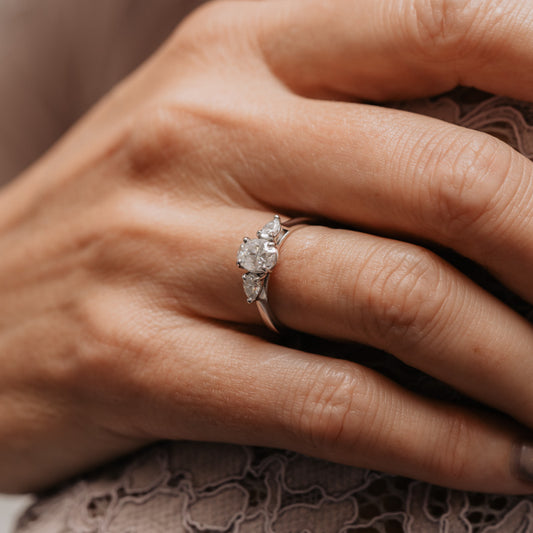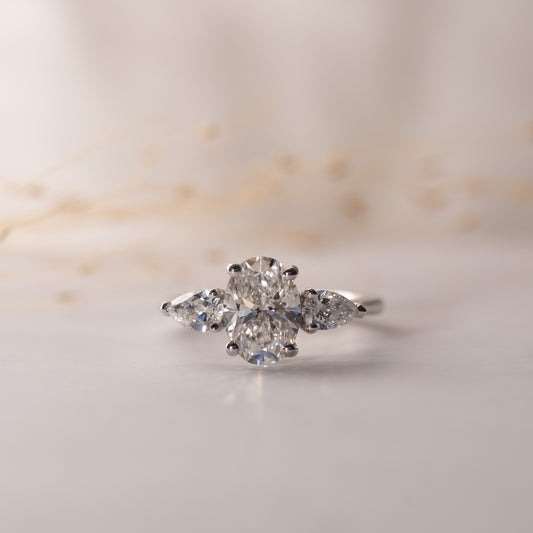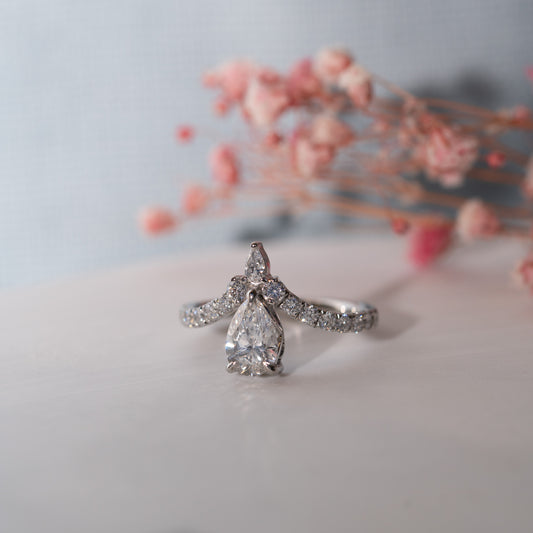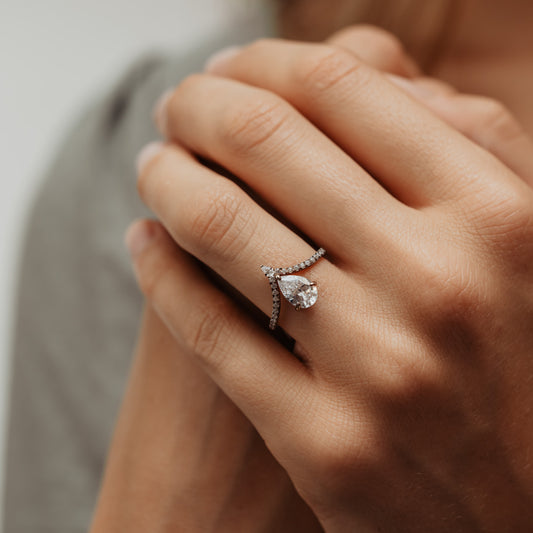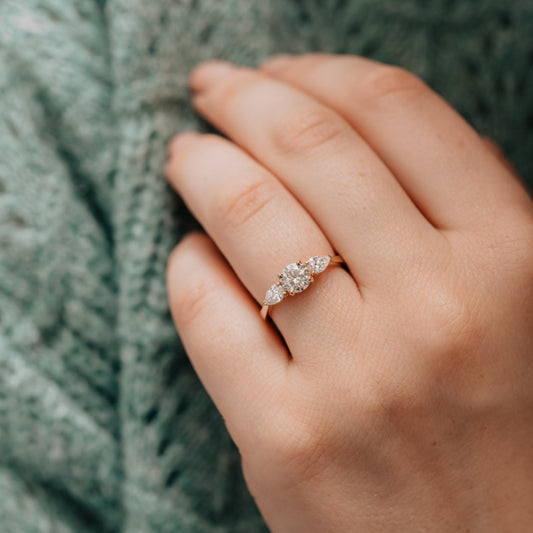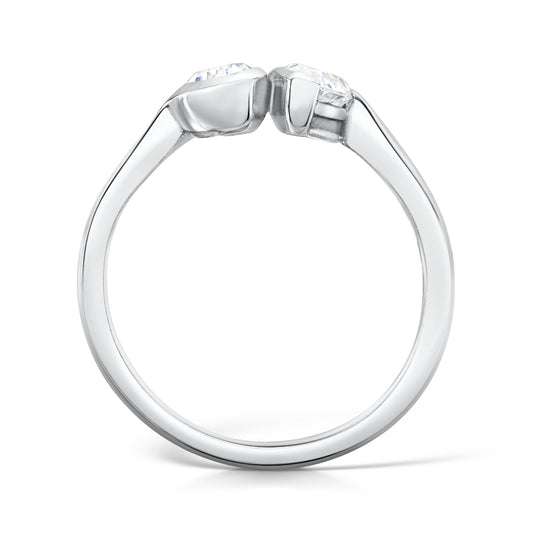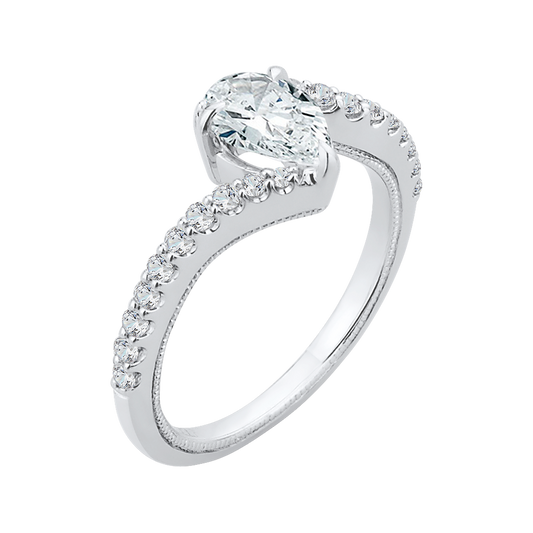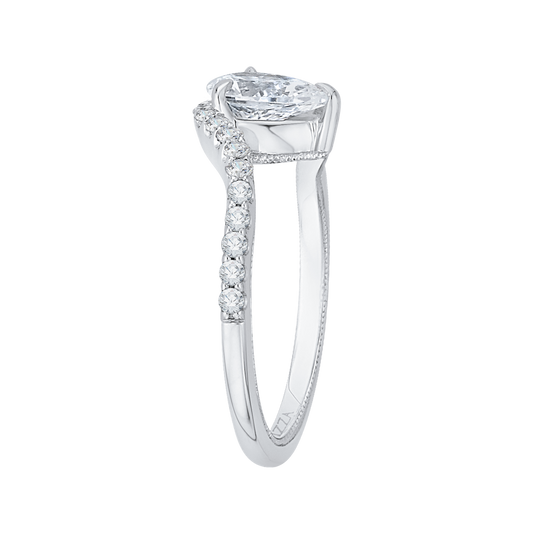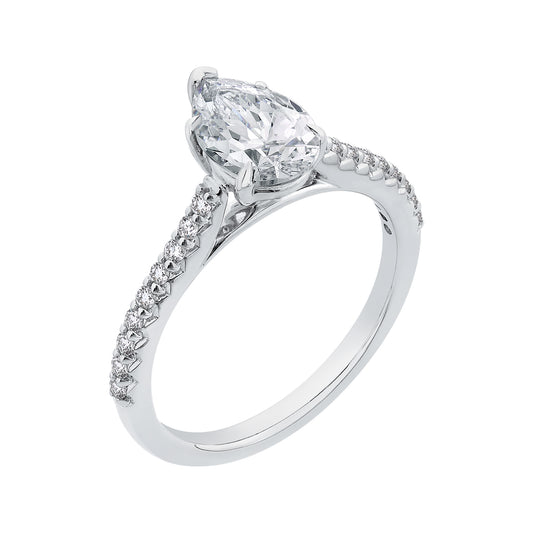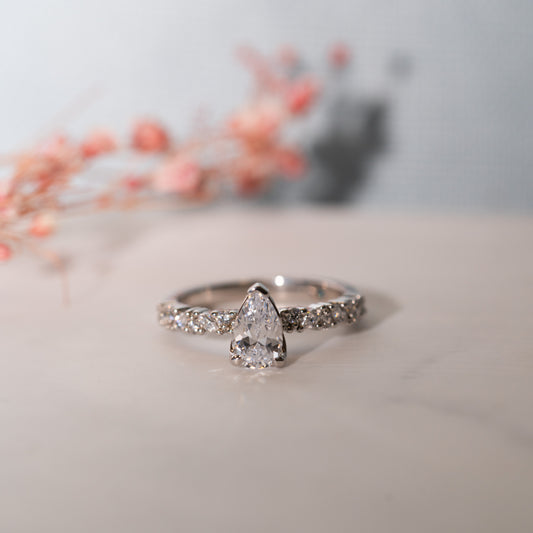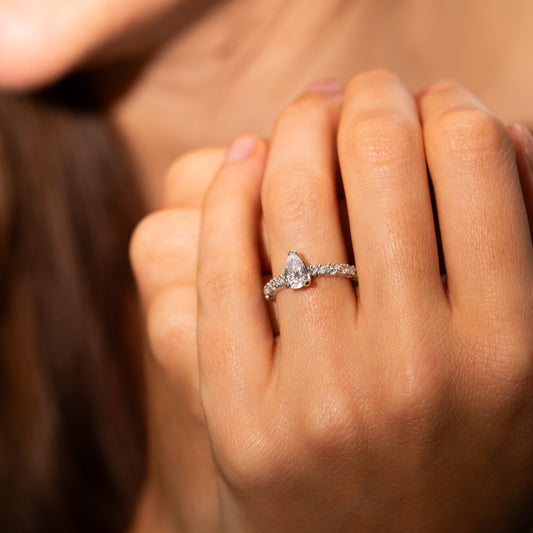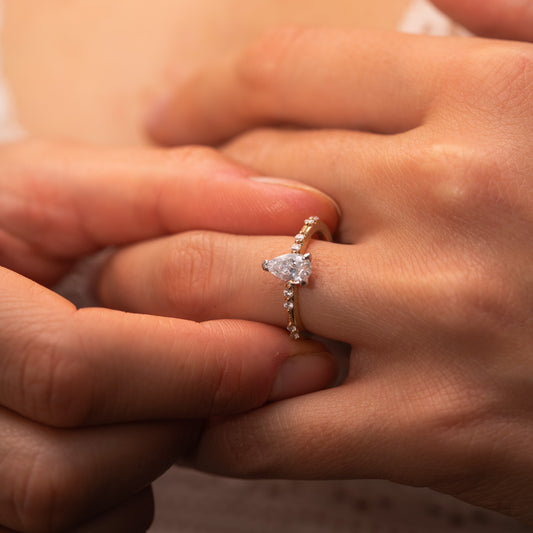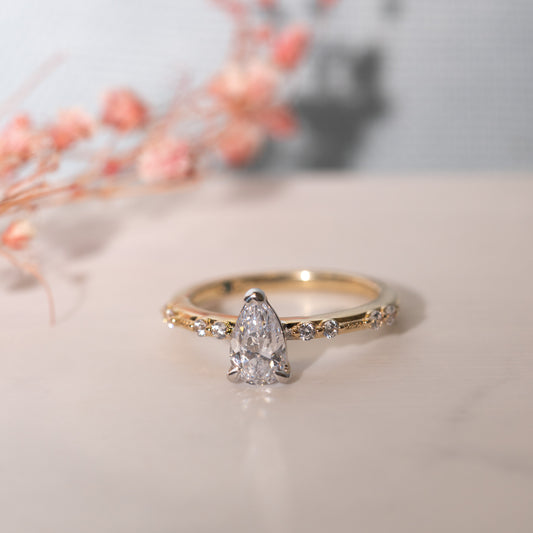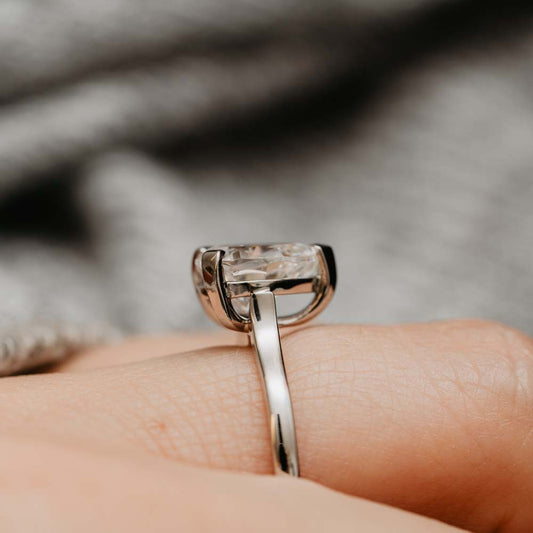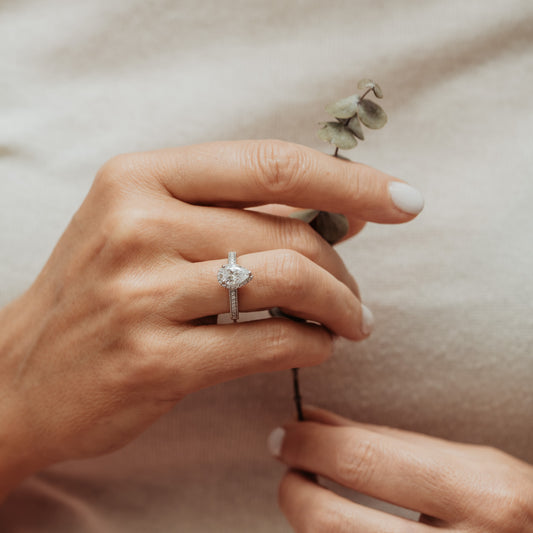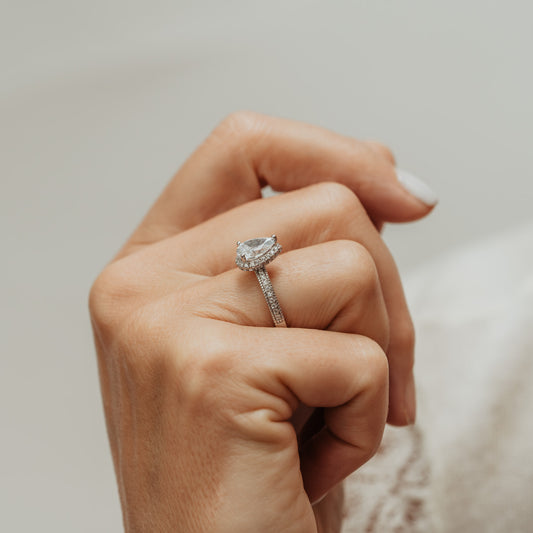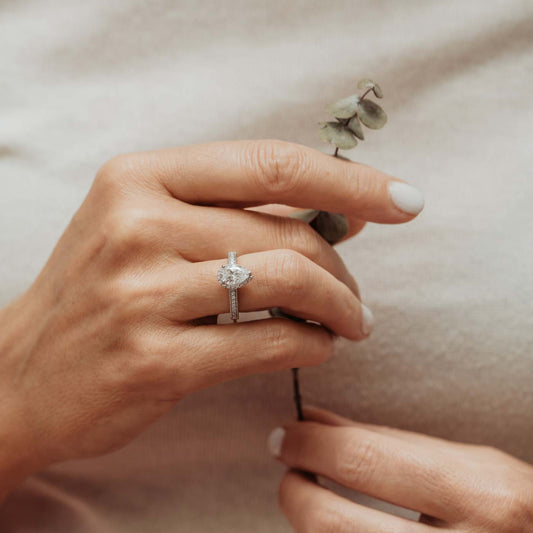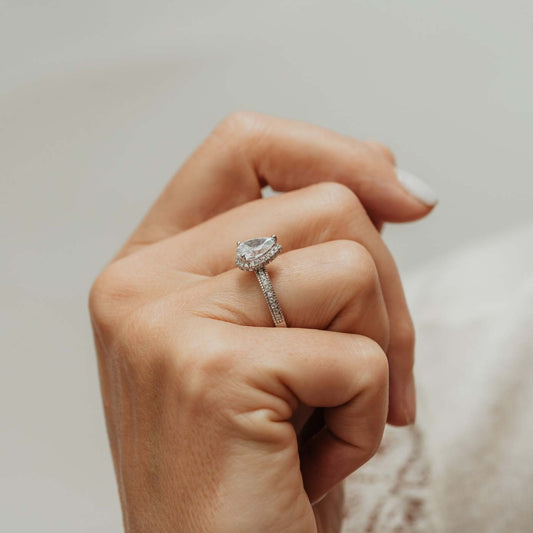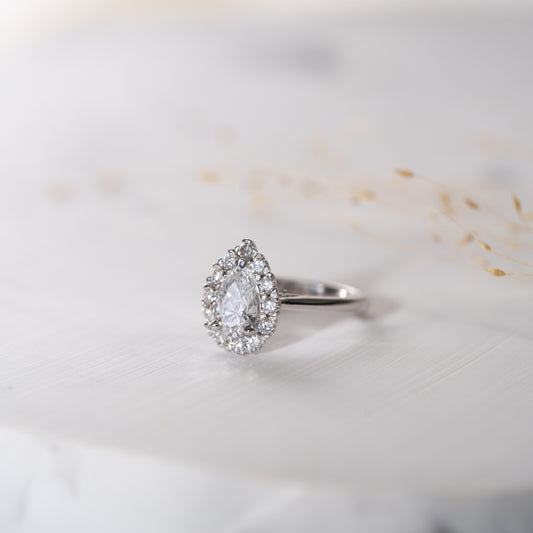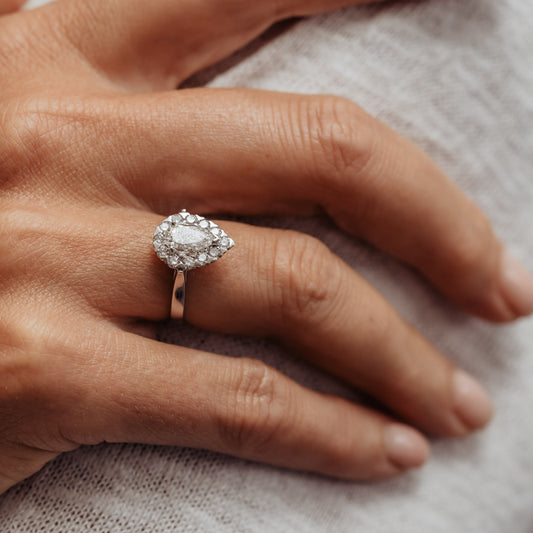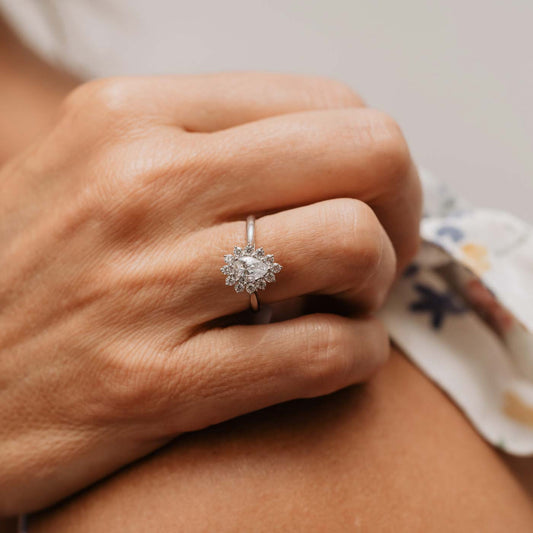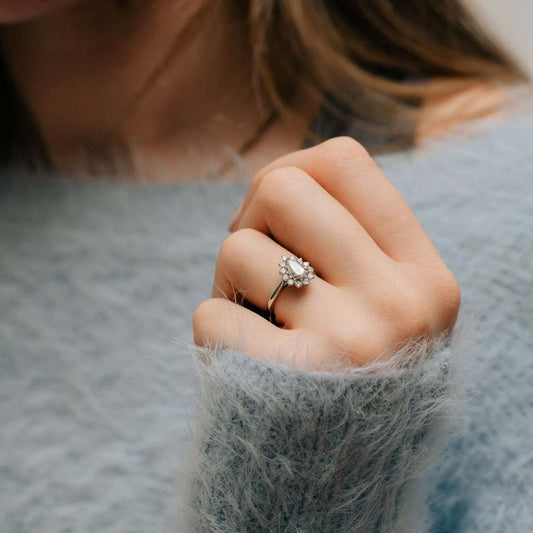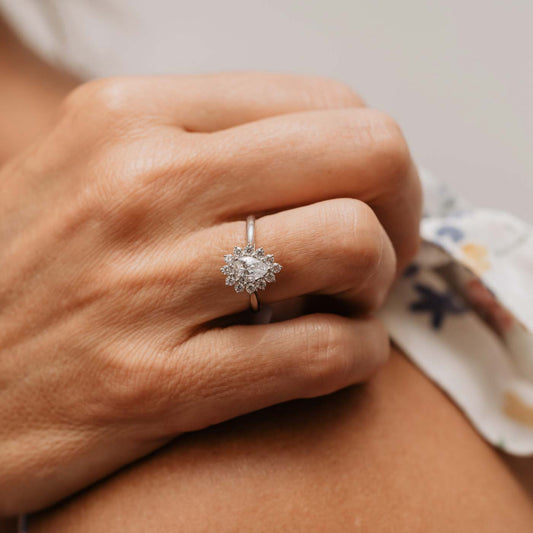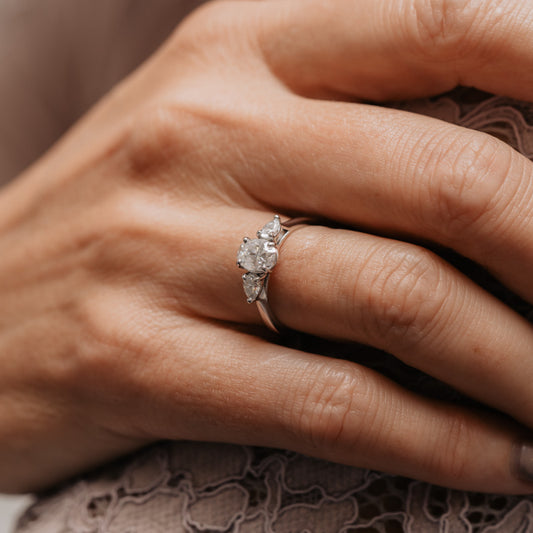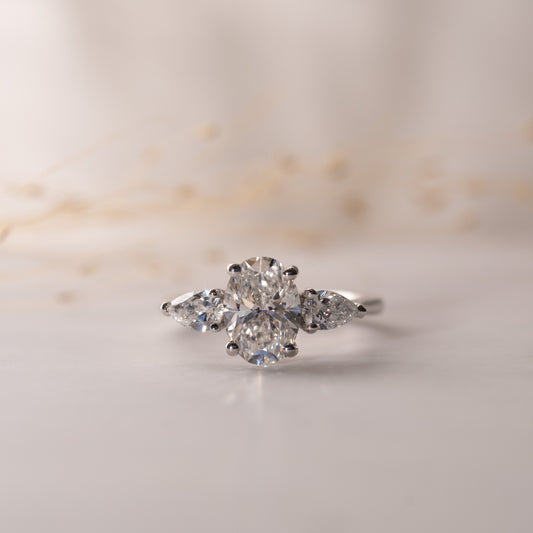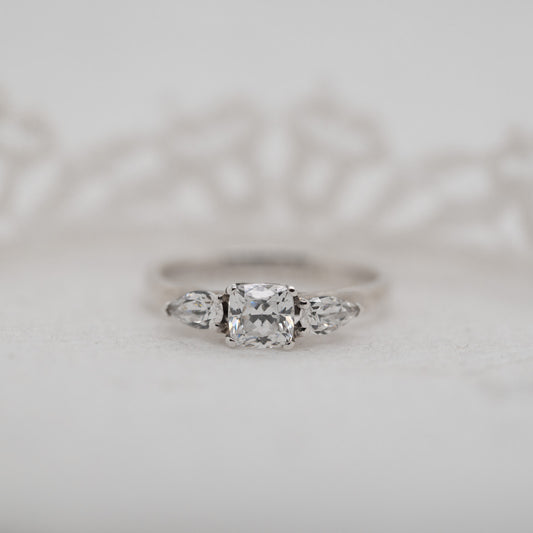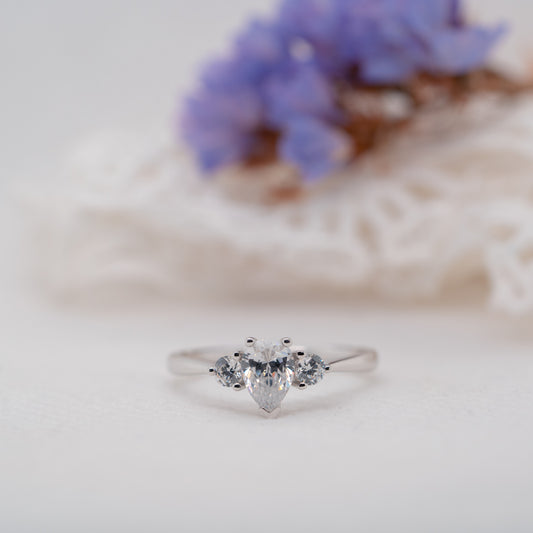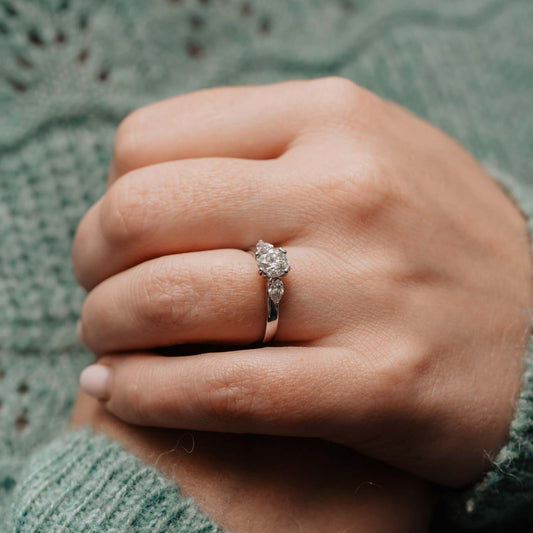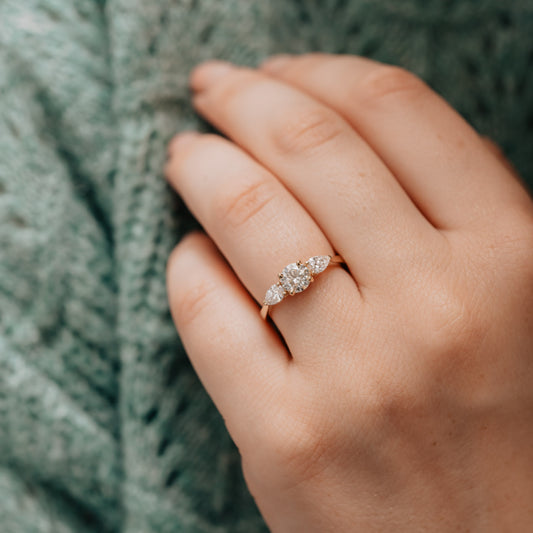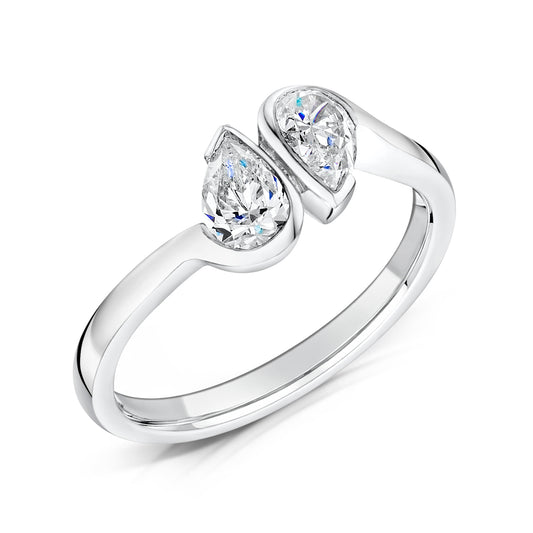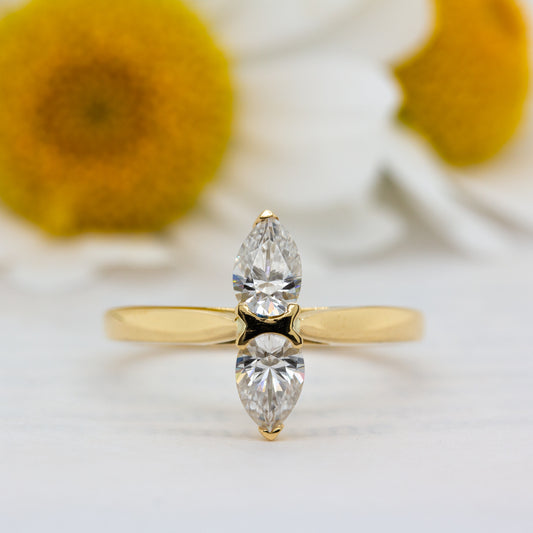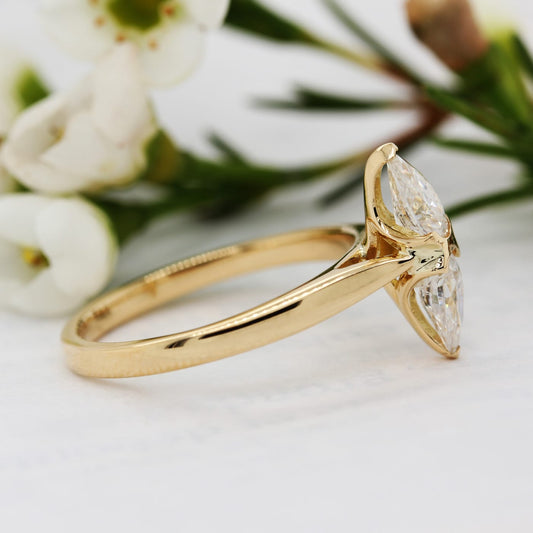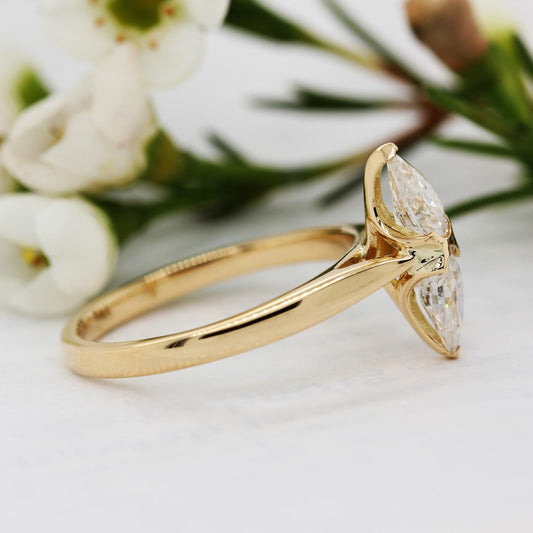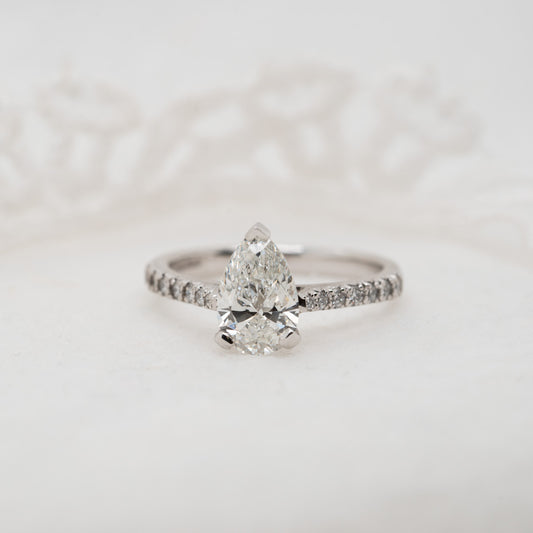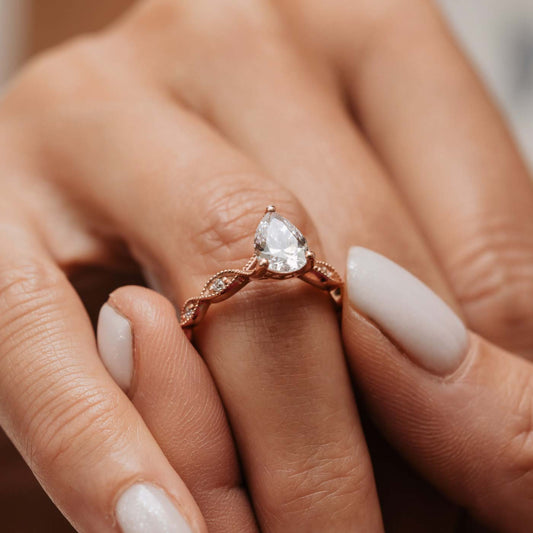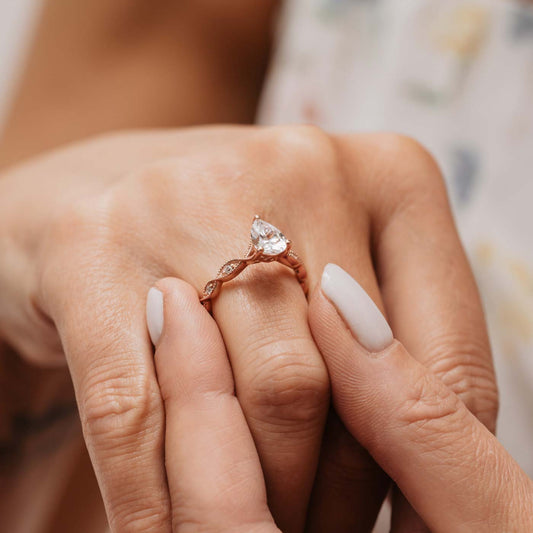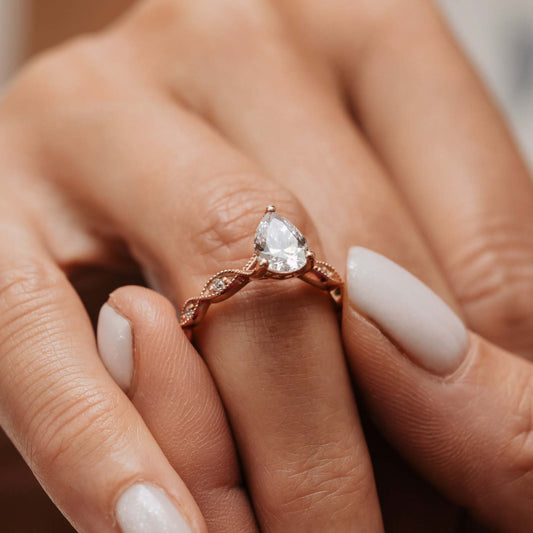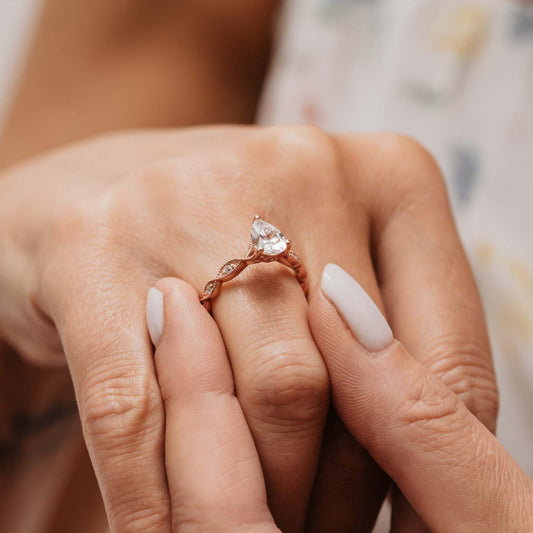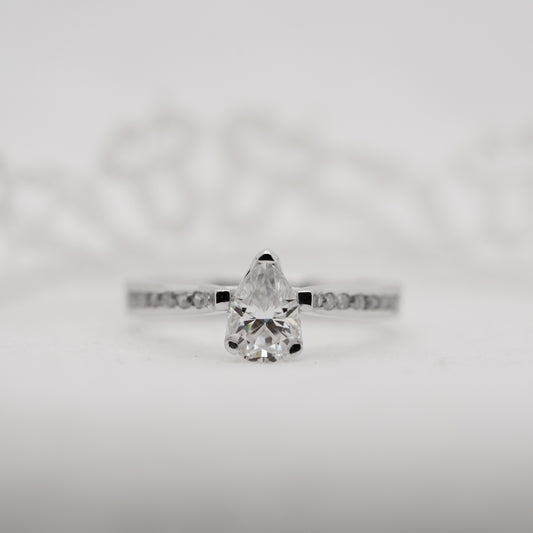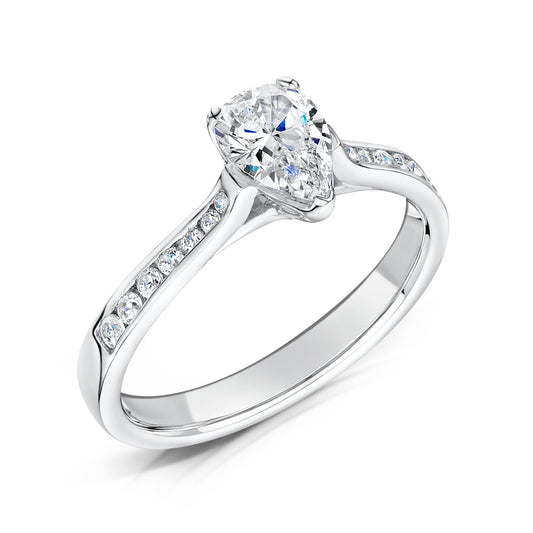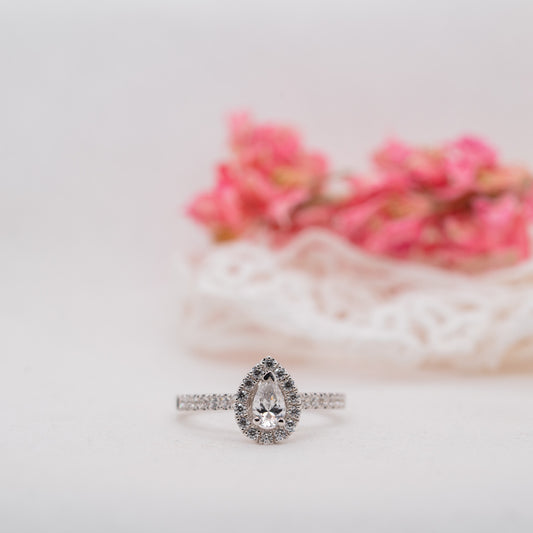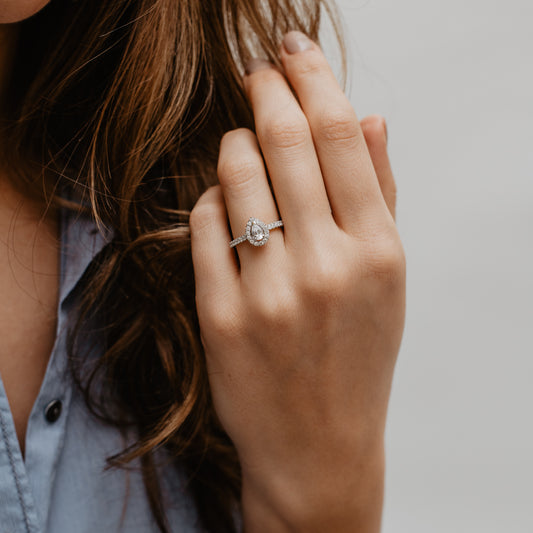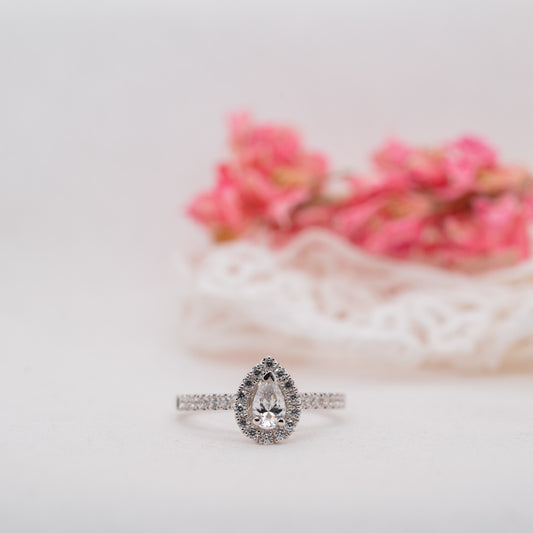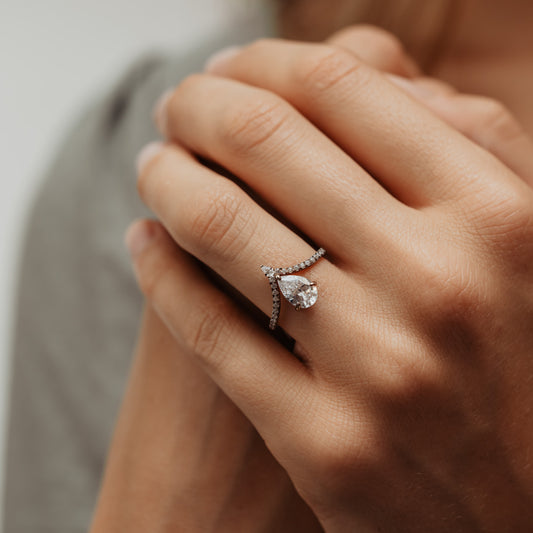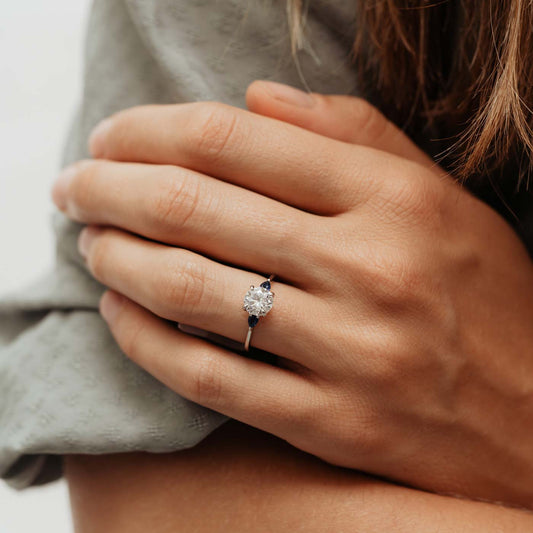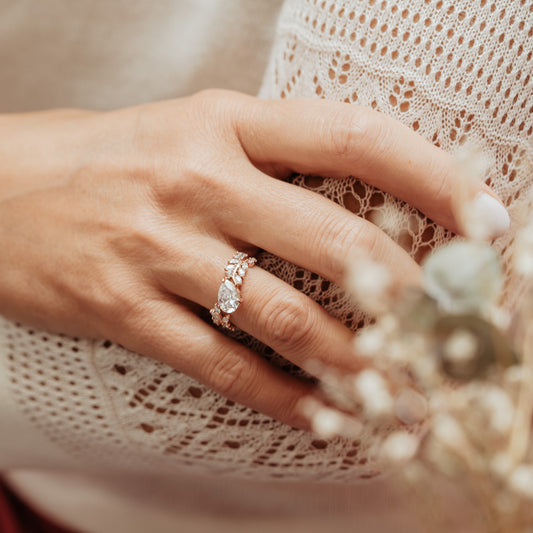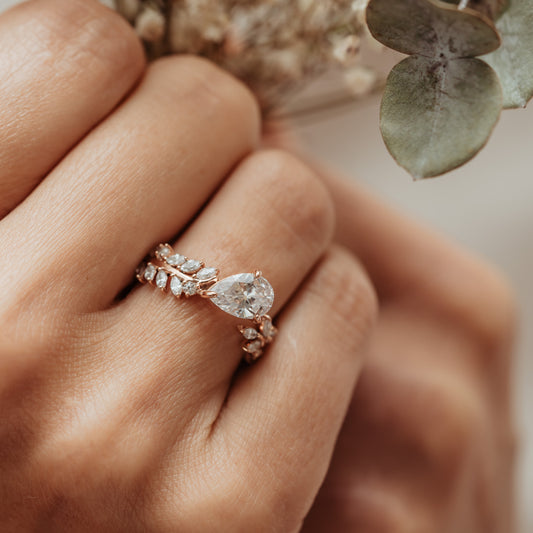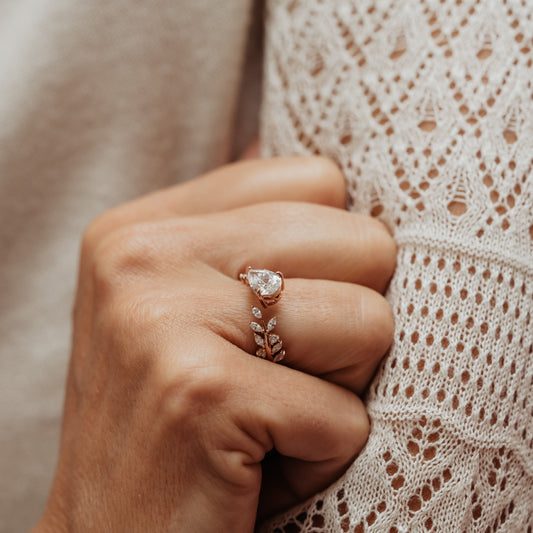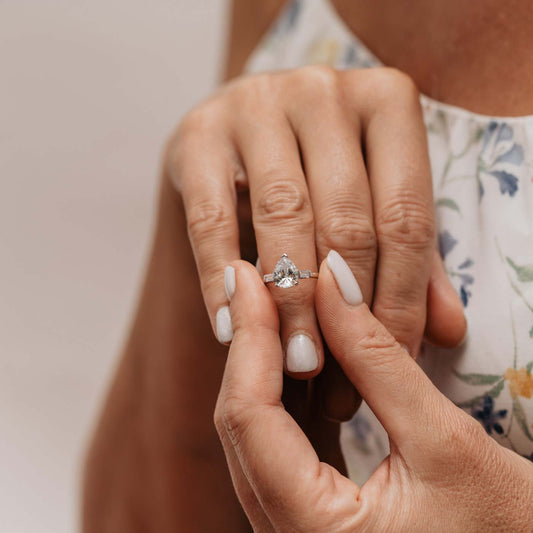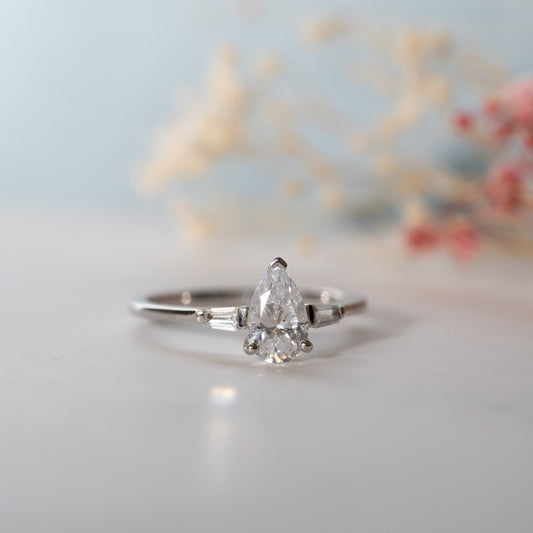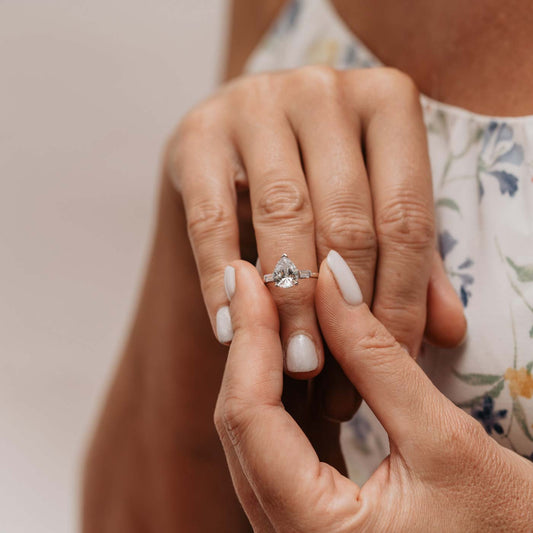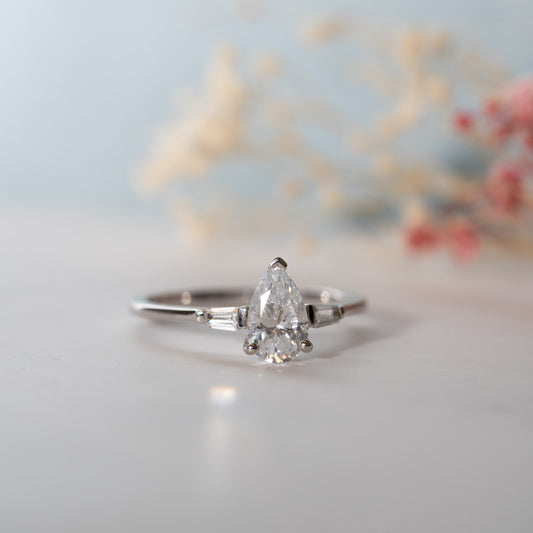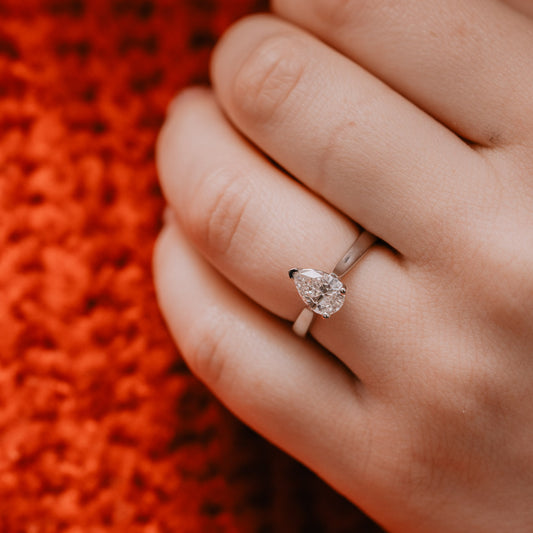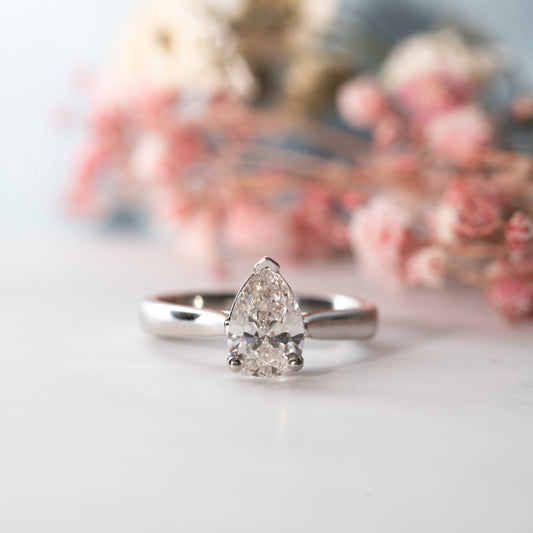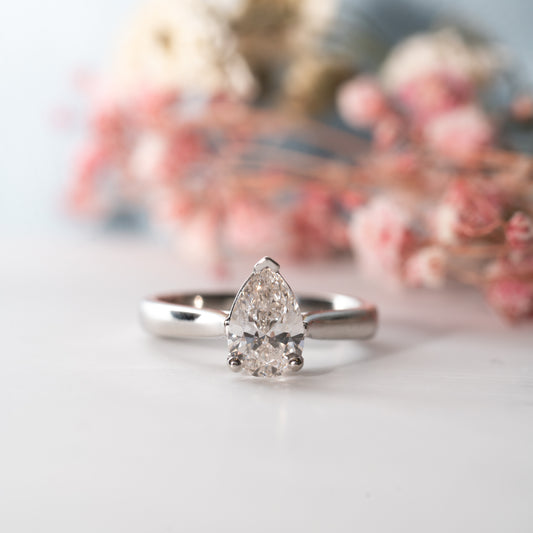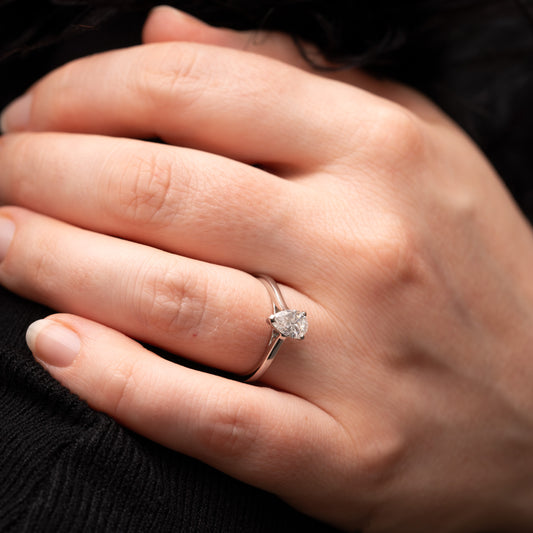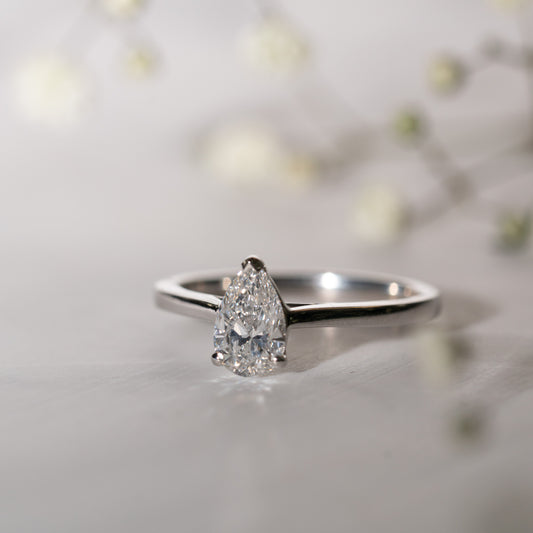-
-
-
-
-
-
-
-
-
-
-
-
-
-
-
-
-
-
-
-
-
-
-
-
-
-
-
-
-
-
-
-
-
-
-
-
-
-
-
-
-
-
-
-
Create Your Own Unique Dream Ring
Bespoke Service
Responsibly Grown Lab Diamonds
100% Certified Recycled Gold
Award Winning Customer Service
1% Net Profits to Charity
100% Score Ethical Rating
Pear Shape Diamond Engagement Rings
The pear cut shape in diamond rings has often been a favourite of royalty and is also known as the "Teardrop Diamond", or "Teardrops of Joy Diamond". The deep, mesmerising pear cut is a combination of the rich fullness of the round brilliant and the sparkling intensity of the marquise. It’s a unique, beautiful cut that looks especially good in a halo setting and is known to have a slenderising effect on fingers due to its tapered end.
In 1475, a Flemish cutter by the name of Lodewyk van Bercken invented a diamond-polishing wheel called a scaif. The scaif transformed the diamond trade. His innovative polishing wheel enabled Van Bercken to place facets into the diamond with absolute symmetry, and opened the doors to the creation of complex diamond cuts.
In the same year Lodewyk van Bercken invented the world’s first pear shaped diamond.
Though traditionally used in pendants and drop earrings, pear cut diamond rings are also eye-catching. It’s a unique, beautiful cut that looks especially good in a halo setting and is known to have a slenderising effect on fingers due to its tapered end.
Choosing the perfect pear lab diamond for your engagement ring is slightly more difficult than selecting a round brilliant cut diamond, for example, since the certification does not give any indication for how the stone will sparkle. The certificate gives you the grades for the colour and clarity, but how the diamond actually looks is not indicated on the certificate, since fancy cut diamonds such as pears are not given a cut grade. This is because standard cut parameters are unachievable due to the complex and unique structure of the pear cut; there is no ideal table % or depth %.
You need to ensure that you can view a video of the pear cut diamond and ideally get it reviewed by an expert before you buy. At Ethica, we are very happy to take a look at the cut quality of the pear diamond and advise you accordingly; just get in touch and we will be happy to help.
This collection of rings are meticulously crafted by hand to the highest standards, offering exquisite quality and sparkle. We offer a choice of both lab grown diamonds that come with a full diamond grading report from the IGI, GIA or GCAL or our signature gemstone, the Ethica Diamond.
Frequently Asked Questions
What is the history of pear cut diamonds?
The pear cut diamond has often been a favourite of royalty and is also known as the teardrop diamond. The deep, mesmerising pear cut is a combination of the rich fullness of the round brilliant and the sparkling intensity of the marquise. Though traditionally used in pendants and drop earrings, this cut is also an eye-catching addition to rings. It’s a unique, beautiful cut that looks especially good in a halo setting and is known to have a slenderising effect on fingers due to its tapered end.
In 1475, a Flemish cutter by the name of Lodewyk van Bercken invented a diamond-polishing wheel called a scaif. The scaif transformed the diamond trade. His innovative polishing wheel enabled Van Bercken to place facets into the diamond with absolute symmetry, and opened the doors to the creation of complex diamond cuts. At the same year Lodewyk van Bercken invented the world’s first pear shaped diamond.
What is a pear cut diamond?
A pear cut diamond, also known as a teardrop diamond, is a modified brilliant cut diamond that combines the shape of a round cut and a marquise cut. It has a rounded end and a pointed end, resembling a teardrop shape.
The pear cut diamond has 58 facets, similar to a round brilliant cut diamond, which allows for excellent light reflection and sparkle. The unique shape of the pear cut gives it a distinctive and elegant appearance, making it a popular choice for engagement rings and other jewellery.
How do I choose a pear cut diamond?
When choosing a pear cut diamond, there are several factors to consider:
1. Shape and Symmetry: Look for a pear cut diamond with a well-proportioned and symmetrical shape. The head and shoulders of the diamond should be even, and the point should align with the centre of the rounded end. Avoid diamonds with uneven or lopsided shapes, ensuring that the shape of the pear diamond is not too curved and not too pointy.
A pear cut diamond is not given symmetry and polish grades because they are not formally assessed or graded by diamond grading laboratories like the Gemological Institute of America (GIA). These grades are typically reserved for round brilliant cut diamonds, which have specific proportions and facet arrangements that can be objectively evaluated for symmetry and polish.
However, this does not mean that symmetry and polish are not important for pear-cut diamonds. These factors play a crucial role in the overall appearance and beauty of the diamond. When selecting a Pear cut diamond, it is still important to examine the diamond carefully and ensure that the facets are well aligned, the edges are smooth, and there are no visible polishing or cutting flaws.
2. Bowtie: (or lack of one) Bowties are bad news! The bow tie effect is a dark area resembling a bow tie shape that can appear in the centre of some pear cut diamonds. It occurs when light is not properly reflected within the diamond, resulting in a loss of brilliance and overall beauty.
Ideally, you want to choose a pear cut diamond that displays a minimal or no bow tie effect. Look for diamonds with good symmetry and cut quality, as these factors can help minimise the bow tie effect. It's also helpful to view the diamond in person or ask for detailed images to assess the presence and intensity of the bow tie effect.
Ultimately, the preference for the bow tie effect is subjective. Some people may find a subtle bow tie effect to add character and uniqueness to the diamond, while others may prefer a diamond with no bow tie effect for maximum brilliance and light performance. Consider your personal preference and choose a pear cut diamond that aligns with your desired aesthetic.
3. Proportions: Pay attention to the proportions of the pear cut diamond. The length-to-width ratio can vary, and it's important to choose one that appeals to your personal taste. A length-to-width ratio between 1.50 and 1.75 is considered well-balanced, but choose a ratio that you find visually appealing.
4. Colour and Clarity: pear cut diamonds tend to show colour more readily, so many people prefer a colourless or near-colourless diamond for the best sparkle and brilliance. A colour grade of D to G (on the GIA colour scale) is often recommended for a pear-cut diamond to achieve a beautiful and bright appearance. Ultimately, it is important to consider your own preferences and budget when choosing the colour grade for a pear cut diamond.
What is the best cut grade for a pear shaped diamond?
A pear cut diamond is not given a cut grade by diamond grading laboratories, such as the Gemological Institute of America (GIA), because there is no standard cut grading system specific to pear shaped diamonds.
Unlike round brilliant diamonds, which have a well-defined cut grading system based on proportions, symmetry, and polish, other fancy shaped diamonds, including pear cuts, do not have a universally accepted cut grading system.
However, the absence of a specific cut grade does not mean that the cut quality of a pear cut diamond is not important. The overall beauty and value of a pear cut diamond are still influenced by its cut. It is advisable to consider the proportion, symmetry, and overall appearance of the diamond when evaluating its cut quality.
What is the best ratio for a pear cut diamond?
When it comes to the best ratio for a pear-cut diamond, it ultimately depends on personal preference. However, a popular and well-balanced ratio for a pear-cut diamond is typically between 1.50 and 1.75. This means that the length of the diamond is 1.5 to 1.75 times longer than its width.
A ratio within this range will create a pear shape that appears visually pleasing and balanced. However, it's important to note that individual preferences may vary, and some individuals may prefer a more elongated or rounder pear shape.
Additionally, consider the overall proportions and symmetry of the diamond. Ensure that the point of the pear is aligned with the centre of the round end, and that both sides are evenly proportioned. This will create a more symmetrical and visually appealing diamond.
Ultimately, it's recommended to view and compare different pear-cut diamonds in person to determine which ratio and shape you find most attractive.
What is the best ring style for a pear cut diamond?
There are several style options that can enhance its unique shape and maximise its brilliance. Some popular settings for pear shape diamonds include:
1. Solitaire Setting: A simple and classic solitaire setting puts all the focus on the diamond itself. It allows the pear shape to stand out and be the centre of attention.
2. Halo Setting: A halo setting features a ring of smaller diamonds surrounding the pear shaped diamond, which adds extra sparkle and makes the centre stone appear larger.
3. Three-Stone Setting: With a three-stone setting, two smaller diamonds are placed on either side of the pear shaped diamond, creating a stunning and balanced look.
4. Side Stone Setting: This setting incorporates smaller diamonds on the band, enhancing the overall brilliance and adding extra sparkle to the pear shaped diamond.
5. Bezel Setting: A bezel setting encircles the entire perimeter of the diamond with a metal rim, providing protection and a modern, sleek look.
Ultimately, the best setting for a pear shaped diamond is a matter of personal preference. Consider factors such as style, budget, and the desired level of sparkle and protection when choosing a setting for your pear shaped diamond.

Exquisite Bespoke Craftsmanship
Looking for something unique to you?
Our commitment to exceptional quality and meticulous attention to detail ensures we create bespoke pieces of luxury jewellery, to be cherished for a lifetime.


Extraordinary Customer Care
We are committed to putting you first and delivering an exceptional experience.
Our expert customer care team is here to answer all of your questions, providing guidance and support at every step.


